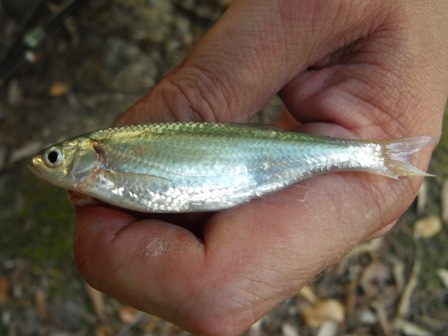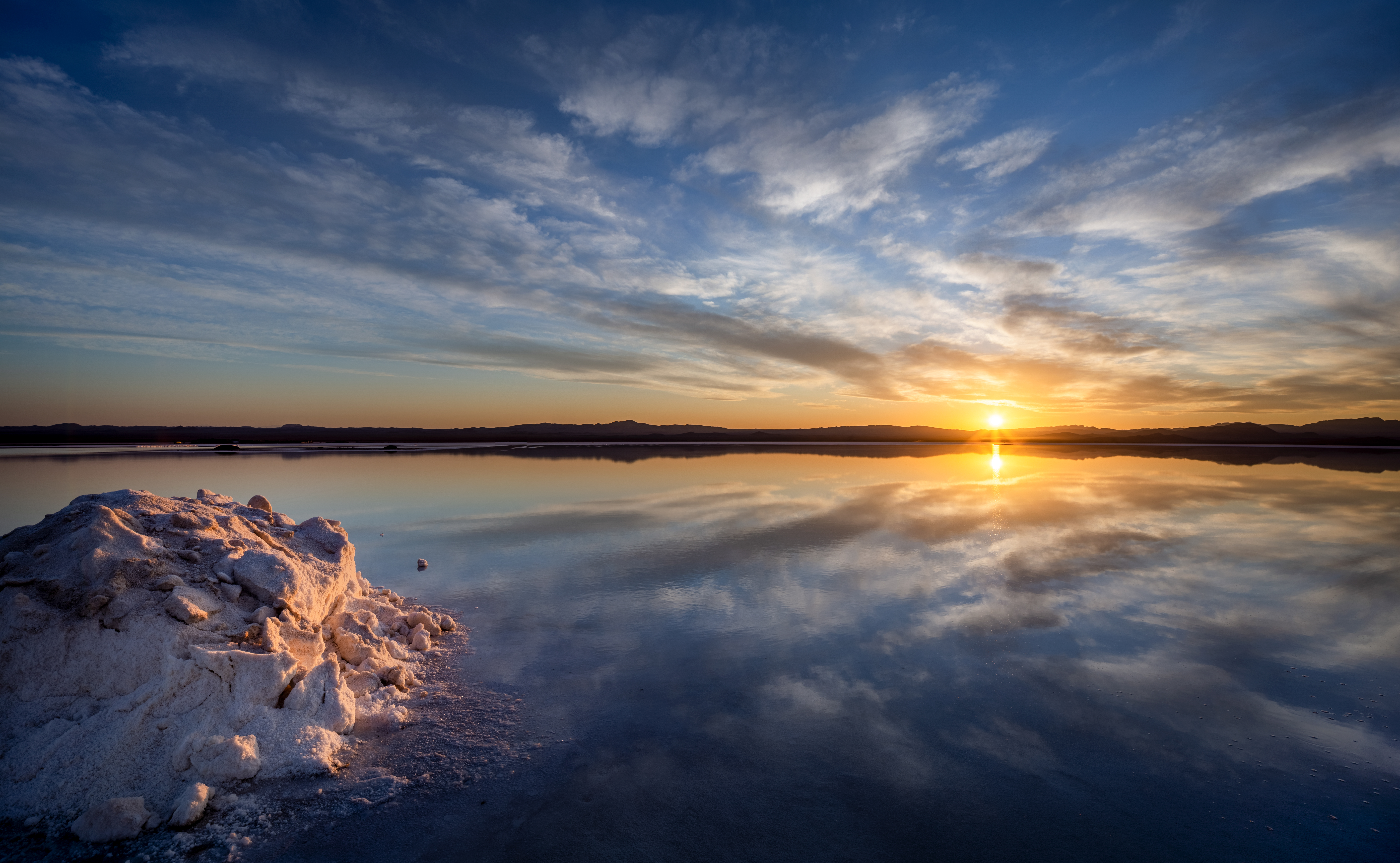|
Alburnus Doriae
''Alburnus doriae'' is a species of cyprinid fish from Iran. It was previously thought to be restricted to central Iran, but recent research shows that it is more widespread and that ''Alburnus amirkabiri'' and ''Petroleuciscus esfahani'' are probably a synonyms of ''Alburnus doriae''. Description ''Alburnus doriae'' is a fish with a slender body which shows marked lateral compression with as lightly convex or straight dorsal profile. It has a pointed snout and the lower jaw normally projects beyond the upper jaw, the snout being at least as long as the diameter of the eye and equal to the interorbital distance, the interorbital area is concave. The mouth points upwards. The maximum standard length is 134mm. The back is dark olive-brown through to grey in colour with silver on the flanks, belly and lower part of the head, a dark grey strip runs from the back of the eye to the caudal peduncle with darker brown spots below and above the lateral line. The fins lack colour apart fr ... [...More Info...] [...Related Items...] OR: [Wikipedia] [Google] [Baidu] |
Alburnus
''Alburnus'' is a genus of fish in the family Cyprinidae, the carps and minnows. They are known commonly as bleaks. A group of species in the genus is known as shemayas. The genus occurs in the western Palearctic realm, and the center of diversity is in Turkey. The genus ''Chalcalburnus'' is now part of ''Alburnus''. Species Currently, 45 recognized species are placed in this genus: * ''Alburnus adanensis'' Battalgazi, 1944 (Adana bleak) * †''Alburnus akili'' Battalgil, 1942 (Beyşehir bleak) * ''Alburnus albidus'' O. G. Costa, 1838 (Italian bleak) * '' Alburnus alburnus'' Linnaeus, 1758 (common bleak) * ''Alburnus amirkabiri'' Mousavi-Sabet, Vatandoust, Khataminejad, Eagderi, Abbasi, M. Nasri, Jouladeh & Vasil'eva, 2015 * ''Alburnus arborella'' Bonaparte, 1841 * ''Alburnus atropatenae'' L. S. Berg, 1925 * ''Alburnus attalus'' Özuluğ & Freyhof, 2007 (Bakır shemaya) * '' Alburnus baliki'' Bogutskaya, Küçük & Ünlü, 2000 (Antalya bleak) * '' Alburnu ... [...More Info...] [...Related Items...] OR: [Wikipedia] [Google] [Baidu] |
Shiraz
Shiraz (; fa, شیراز, Širâz ) is the List of largest cities of Iran, fifth-most-populous city of Iran and the capital of Fars province, Fars Province, which has been historically known as Pars (Sasanian province), Pars () and Persis. As of the 2016 national census, the population of the city was 1,565,572 people, and its built-up area with Sadra, Fars, Sadra was home to almost 1,800,000 inhabitants. A census in 2021 showed an increase in the city's population to 1,995,500 people. Shiraz is located in Southern Iran, southwestern Iran on the () seasonal river. Founded in the early Islamic period, the city has a moderate climate and has been a regional trade center for over a thousand years. The earliest reference to the city, as ''Tiraziš'', is on Elamite Clay tablet, clay tablets dated to 2000 BCE. The modern city was restored or founded by the Arabs, Arab Umayyad Caliphate in 693 CE and grew prominent under the successive Iranian peoples, Iranian Saffarid dynasty, Saffar ... [...More Info...] [...Related Items...] OR: [Wikipedia] [Google] [Baidu] |
Giacomo Doria
Marquis Giacomo Doria (1 November 1840 – 19 September 1913) was an Italian naturalist, botanist, herpetologist, and politician. He was the founder of the Museo Civico di Storia Naturale in Genoa in 1867, and director from then until his death."DORIA Giacomo". ''Archivio Storico Senato della Repubblica Italiana'' (in Italian). It is now named for him as the . He collected numerous samples of plants, shells, butterflies, other insects and various animals in |
Species Description
A species description is a formal description of a newly discovered species, usually in the form of a scientific paper. Its purpose is to give a clear description of a new species of organism and explain how it differs from species that have been described previously or are related. In order for species to be validly described, they need to follow guidelines established over time. Zoological naming requires adherence to the ICZN code, plants, the ICN, viruses ICTV, and so on. The species description often contains photographs or other illustrations of type material along with a note on where they are deposited. The publication in which the species is described gives the new species a formal scientific name. Some 1.9 million species have been identified and described, out of some 8.7 million that may actually exist. Millions more have become extinct throughout the existence of life on Earth. Naming process A name of a new species becomes valid (available in zo ... [...More Info...] [...Related Items...] OR: [Wikipedia] [Google] [Baidu] |
Tigris
The Tigris () is the easternmost of the two great rivers that define Mesopotamia, the other being the Euphrates. The river flows south from the mountains of the Armenian Highlands through the Syrian and Arabian Deserts, and empties into the Persian Gulf. Geography The Tigris is 1,750 km (1,090 mi) long, rising in the Taurus Mountains of eastern Turkey about 25 km (16 mi) southeast of the city of Elazığ and about 30 km (20 mi) from the headwaters of the Euphrates. The river then flows for 400 km (250 mi) through Southeastern Turkey before becoming part of the Syria-Turkey border. This stretch of 44 km (27 mi) is the only part of the river that is located in Syria. Some of its affluences are Garzan, Anbarçayi, Batman, and the Great and the Little Zab. Close to its confluence with the Euphrates, the Tigris splits into several channels. First, the artificial Shatt al-Hayy branches off, to join the Euphrates near Nasiriyah. ... [...More Info...] [...Related Items...] OR: [Wikipedia] [Google] [Baidu] |
Karun River
The Karun ( fa, کارون, ) is the Iranian river with the highest water flow, and its only navigable river. It is long. It rises in the Zard Kuh mountains of the Bakhtiari district in the Zagros Range, receiving many tributaries, such as the Dez and the Kuhrang, before passing through the capital of the Khuzestan Province of Iran, the city of Ahvaz before emptying to its mouth into Arvand Rud (Shatt al-Arab). The Karun continues toward the Persian Gulf, forking into two primary branches on its delta – the Bahmanshir and the Haffar – that join the Arvand Rud, emptying into the Persian Gulf. The important Island of Abadan is located between these two branches of the Karun. The port city of Khorramshahr is divided from the Island of Abadan by the Haffar branch. Juris Zarins and other scholars have identified the Karun as one of the four rivers of Eden, the others being the Tigris, the Euphrates, and either the Wadi Al-Batin or the Karkheh. Name In early classical ti ... [...More Info...] [...Related Items...] OR: [Wikipedia] [Google] [Baidu] |
Salt Lake
A salt lake or saline lake is a landlocked body of water that has a concentration of salts (typically sodium chloride) and other dissolved minerals significantly higher than most lakes (often defined as at least three grams of salt per litre). In some cases, salt lakes have a higher concentration of salt than sea water; such lakes can also be termed hypersaline lakes, and may also be pink lakes on account of their colour. An alkalic salt lake that has a high content of carbonate is sometimes termed a soda lake. One saline lake classification differentiates between: *subsaline: 0.5–3‰ (0.05-0.3%) *hyposaline: 3–20‰ (0.3-2%) *mesosaline: 20–50‰ (2-5%) *hypersaline: greater than 50‰ (5%) Properties Salt lakes form when the water flowing into the lake, containing salt or minerals, cannot leave because the lake is endorheic (terminal). The water then evaporates, leaving behind any dissolved salts and thus increasing its salinity, making a salt lake an excellent place ... [...More Info...] [...Related Items...] OR: [Wikipedia] [Google] [Baidu] |
Qom (River)
The Qom River or Qom Roud ( fa, رودخانه قمرود) is a large river in Iran that receives its water from the Zagros Mountains and mounds into the Namak Lake. The Qom River flows through the city of Qom, and together with the Qareh Su it gains a length of approximately . The water level strongly fluctuates between 312 m³/s and only 4 m³/s. This is partially the effect of taking water for irrigation. In 2014, the World Resources Institute The World Resources Institute (WRI) is a global research non-profit organization established in 1982 with funding from the MacArthur Foundation under the leadership of James Gustave Speth. WRI's activities are focused on seven areas: food, fore ... ranked the Qom basin as "extremely high" for water stress. References Landforms of Qom Province Rivers of Qom Province {{Iran-river-stub ... [...More Info...] [...Related Items...] OR: [Wikipedia] [Google] [Baidu] |
Cyprinidae
Cyprinidae is a family of freshwater fish commonly called the carp or minnow family. It includes the carps, the true minnows, and relatives like the barbs and barbels. Cyprinidae is the largest and most diverse fish family and the largest vertebrate animal family in general with about 3,000 species, of which only 1,270 remain extant, divided into about 370 genera. Cyprinids range from about 12 mm in size to the giant barb (''Catlocarpio siamensis''). By genus and species count, the family makes up more than two-thirds of the ostariophysian order Cypriniformes. The family name is derived from the Greek word ( 'carp'). Biology and ecology Cyprinids are stomachless fish with toothless jaws. Even so, food can be effectively chewed by the gill rakers of the specialized last gill bow. These pharyngeal teeth allow the fish to make chewing motions against a chewing plate formed by a bony process of the skull. The pharyngeal teeth are unique to each species and are used by scient ... [...More Info...] [...Related Items...] OR: [Wikipedia] [Google] [Baidu] |






